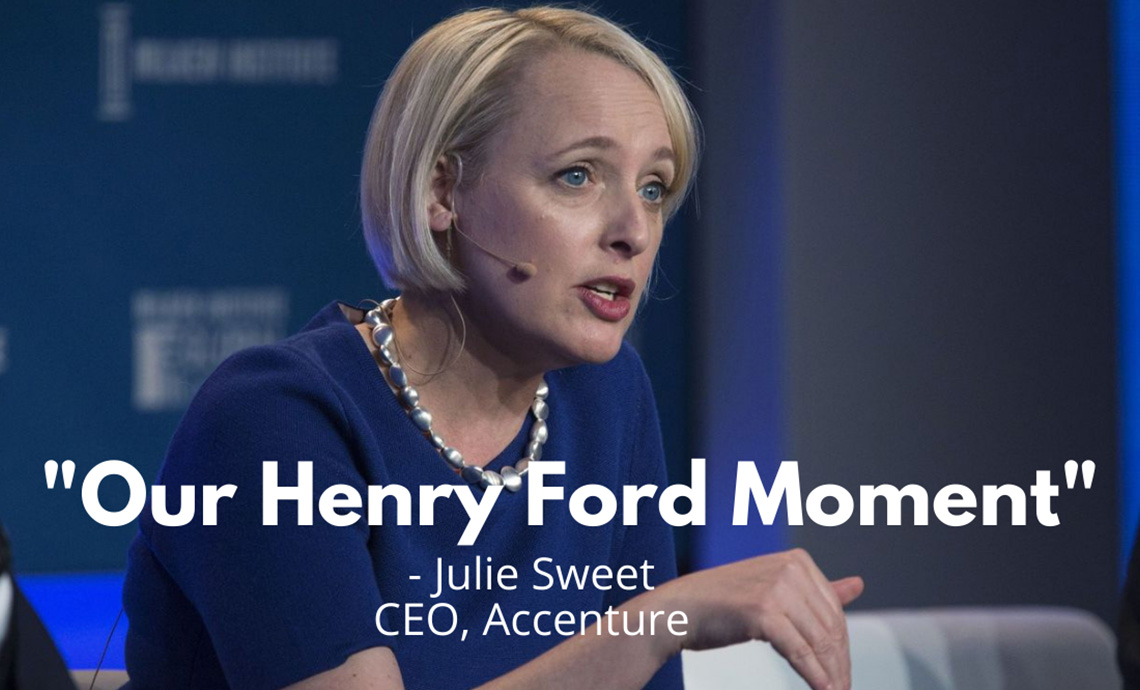
Excerpted from “Competing on Analytics” by Thomas H. Davenport of Harvard Business Review
“To identify characteristics shared by analytics competitors, I and two of my colleagues at Babson College’s Working Knowledge Research Center studied 32 organizations that have made a commitment to quantitative, fact-based analysis. Eleven of those organizations we classified as full-bore analytics competitors, meaning top management had announced that analytics was key to their strategies; they had multiple initiatives under way involving complex data and statistical analysis, and they managed analytical activity at the enterprise (not departmental) level.
“This article lays out the characteristics and practices of these statistical masters and describes some of the very substantial changes other companies must undergo in order to compete on quantitative turf. As one would expect, the transformation requires a significant investment in technology, the accumulation of massive stores of data, and the formulation of companywide strategies for managing the data. But at least as important, it requires executives’ vocal, unswerving commitment and willingness to change the way employees think, work, and are treated. As Gary Loveman, CEO of analytics competitor Harrah’s, frequently puts it, “Do we think this is true? Or do we know?”
Anatomy of an Analytics Competitor
Widespread use of modeling and optimization.
Any company can generate simple descriptive statistics about aspects of its business—average revenue per employee, for example, or average order size. But analytics competitors look well beyond basic statistics. These companies use predictive modeling to identify the most profitable customers—plus those with the greatest profit potential and the ones most likely to cancel their accounts. They pool data generated in-house and data acquired from outside sources (which they analyze more deeply than do their less statistically savvy competitors) for a comprehensive understanding of their customers. They optimize their supply chains and can thus determine the impact of an unexpected constraint, simulate alternatives, and route shipments around problems. They establish prices in real time to get the highest yield possible from each of their customer transactions. They create complex models of how their operational costs relate to their financial performance.
An enterprise approach.
Analytics competitors understand that most business functions—even those, like marketing, that have historically depended on art rather than science—can be improved with sophisticated quantitative techniques. These organizations don’t gain advantage from one killer app, but rather from multiple applications supporting many parts of the business—and, in a few cases, being rolled out for use by customers and suppliers.
Analytics competitors treat all such activities from all provenances as a single, coherent initiative, often massed under one rubric, such as “information-based strategy” at Capital One or “information-based customer management” at Barclays Bank. These programs operate not just under a common label but also under common leadership and with common technology and tools. In traditional companies, “business intelligence” (the term IT people use for analytics and reporting processes and software) is generally managed by departments; number-crunching functions select their own tools, control their own data warehouses, and train their own people. But that way, chaos lies. For one thing, the proliferation of user-developed spreadsheets and databases inevitably leads to multiple versions of key indicators within an organization. Furthermore, research has shown that between 20% and 40% of spreadsheets contain errors; the more spreadsheets floating around a company, therefore, the more fecund the breeding ground for mistakes. Analytics competitors, by contrast, field centralized groups to ensure that critical data and other resources are well managed and that different parts of the organization can share data easily, without the impediments of inconsistent formats, definitions, and standards.
Senior executive advocates.
A companywide embrace of analytics impels changes in culture, processes, behavior, and skills for many employees. And so, like any major transition, it requires leadership from executives at the very top who have a passion for the quantitative approach. Ideally, the principal advocate is the CEO. Indeed, we found several chief executives who have driven the shift to analytics at their companies over the past few years, including Loveman of Harrah’s, Jeff Bezos of Amazon, and Rich Fairbank of Capital One. Before he retired from the Sara Lee Bakery Group, former CEO Barry Beracha kept a sign on his desk that summed up his personal and organizational philosophy: “In God we trust. All others bring data.” We did come across some companies in which a single functional or business unit leader was trying to push analytics throughout the organization, and a few were making some progress. But we found that these lower-level people lacked the clout, the perspective, and the cross-functional scope to change the culture in any meaningful way.
Their Sources of Strength
Analytics competitors are more than simple number-crunching factories. Certainly, they apply technology—with a mixture of brute force and finesse—to multiple business problems. But they also direct their energies toward finding the right focus, building the right culture, and hiring the right people to make optimal use of the data they constantly churn. In the end, people and strategy, as much as information technology, give such organizations strength.
The right focus.
Although analytics competitors encourage universal fact-based decisions, they must choose where to direct resource-intensive efforts. Generally, they pick several functions or initiatives that together serve an overarching strategy. Harrah’s, for example, has aimed much of its analytical activity at increasing customer loyalty, customer service, and related areas like pricing and promotions. UPS has broadened its focus from logistics to customers, in the interest of providing superior service. While such multipronged strategies define analytics competitors, executives we interviewed warned companies against becoming too diffuse in their initiatives or losing clear sight of the business purpose behind each.
The right culture.
Culture is a soft concept; analytics is a hard discipline. Nonetheless, analytics competitors must instill a companywide respect for measuring, testing, and evaluating quantitative evidence. Employees are urged to base decisions on hard facts. And they know that their performance is gauged the same way. Human resource organizations within analytics competitors are rigorous about applying metrics to compensation and rewards. Harrah’s, for example, has made a dramatic change from a rewards culture based on paternalism and tenure to one based on such meticulously collected performance measurements as financial and customer service results. Senior executives also set a consistent example with their own behavior, exhibiting a hunger for and confidence in fact and analysis. One exemplar of such leadership was Beracha of the Sara Lee Bakery Group, known to his employees as a “data dog” because he hounded them for data to support any assertion or hypothesis.
The right technology.
Competing on analytics means competing on technology. And while the most serious competitors investigate the latest statistical algorithms and decision science approaches, they also constantly monitor and push the IT frontier. The analytics group at one consumer products company went so far as to build its own supercomputer because it felt that commercially available models were inadequate for its demands. Such heroic feats usually aren’t necessary, but serious analytics does require the following:
A data strategy.
Companies have invested many millions of dollars in systems that snatch data from every conceivable source. Enterprise resource planning, customer relationship management, point-of-sale, and other systems ensure that no transaction or other significant exchange occurs without leaving a mark. But to compete on that information, companies must present it in standard formats, integrate it, store it in a data warehouse, and make it easily accessible to anyone and everyone. And they will need a lot of it. For example, a company may spend several years accumulating data on different marketing approaches before it has gathered enough to reliably analyze the effectiveness of an advertising campaign.
Business intelligence software.
The term “business intelligence,” which first popped up in the late 1980s, encompasses a wide array of processes and software used to collect, analyze, and disseminate data, all in the interests of better decision making. Business intelligence tools allow employees to extract, transform, and load (or ETL, as people in the industry would say) data for analysis and then make those analyses available in reports, alerts, and scorecards. The popularity of analytics competition is partly a response to the emergence of integrated packages of these tools.
The German pathologist Rudolph Virchow famously called the task of science “to stake out the limits of the knowable.” Analytics competitors pursue a similar goal, although the universe they seek to know is a more circumscribed one of customer behavior, product movement, employee performance, and financial reactions. Every day, advances in technology and techniques give companies a better and better handle on the critical minutiae of their operations.



